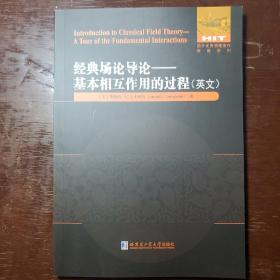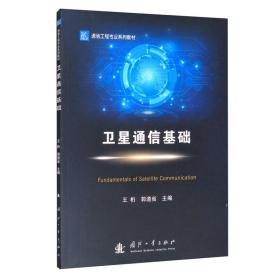
经典场论导论--基本相互作用的过程(英文版)/国外优秀物理著作原版系列
全新正版未拆封
¥ 39.88 4.5折 ¥ 88 全新
库存2件
作者[美]贾勒特·L.兰卡斯特 著
出版社哈尔滨工业大学出版社
出版时间2021-07
版次1
装帧平装
上书时间2023-12-06
- 在售商品 暂无
- 平均发货时间 29小时
- 好评率 暂无
- 最新上架
商品详情
- 品相描述:全新
图书标准信息
- 作者 [美]贾勒特·L.兰卡斯特 著
- 出版社 哈尔滨工业大学出版社
- 出版时间 2021-07
- 版次 1
- ISBN 9787560394480
- 定价 88.00元
- 装帧 平装
- 开本 16开
- 页数 228页
- 【内容简介】
- 本书共包括5章内容,第1章包含了对基本相互作用的简要概述,同时也提出了经典场作为相互作用介体的概念;第2章提出了标量场理论的基本概念,即简谐振子链的连续极限,还介绍了四维矢量表示法及其作为构造和使用洛伦兹不变量数量的便捷表示法;第3章探讨了麦克斯韦方程组以拉格朗日形式重铸,并使用经典场论的形式主义探索了电荷和电流之间的相互作用;第4章则阐述了通过类比电磁学来建立杨-米尔斯理论;第5章着重介绍了重力。本书适合高等院校师生、相关专业的爱好者及研究者参考阅读。
- 【作者简介】
- 贾勒特・L.兰卡斯特拥有北卡罗来纳大学格林斯博罗分校的物理学和应用数学学士学位,以及纽约大学的物理学博士学位。他的研究专注于低维量子系统和突发现象的动力学。他曾在北卡罗来纳州格林斯博罗的纳米科学与纳米工程联合学院担任博士后研究员,并在弗吉尼亚州塞勒姆的罗阿诺克学院担任物理客座助理教授。目前,他是北卡罗来纳州海波特大学的物理学助理教授。
- 【目录】
-
Preface
Acknowledgements
Author biography
1 Motivation and introduction
1.1 The four fundamental interactions
1.1.1 Electromagnetism
1.1.2 Strong and weak nuclear forces
1.1.3 Gravity
1.2 Particle exchange and force mediation
1.3 Examining a simple model
1.4 Relativity emerges
1.5 The necessity of fields and a conundrum
1.6 Exercises
References
2 Basics of scalar field theory
2.1 From oscillators to fields
2.2 Lagrange and Hamilton
2.3 Hamiltonian with sources
2.4 The attractive Yukawa potential
2.5 Some relativistic technology
2.6 Relativistic field theories
2.7 Exercises
References
3 Electromagnetism
3.1 Maxwell\'s equations
3.2 Lagrangian formulation
3.3 Why like charges repel: the Coulomb potential
3.4 Resolution of a conundrum and magnetic energy
3.5 The electric field in arbitrary spatial dimensions
3.6 Propagation of interactions
3.7 Electromagnetic duality and magnetic monopoles
3.8 Gauge invariance
3.9 Exercises
References
4 Yang-Mills theory
4.1 From Maxwell to Yang-Mills
4.2 Nonabelian gauge theory formalism
4.3 The static potential
4.4 The strong nuclear interaction
4.5 Classical color charge dynamics
4.6 Effective static quark-antiquark potential
4.7 Electroweak unification and Higgs mechanism
4.8 Exercises
References
5 Gravity as a field theory
5.1 The trouble with Newtonian gravity
5.2 Constructing an appropriate field theory
5.3 Emergence of Newton\'s law of gravity
5.4 Interactions of light and matter
5.5 A glimpse at general relativity
5.6 Gravity with extra, compactified dimensions
5.7 Exercises
References
Appendix A: Mathematical results
编辑手记
相关推荐
-

经典场论导论-基本相互作用的过程(英文)
全新天津
¥ 60.00
-

经典场论导论--基本相互作用的过程(英文版)/国外物理著作原版系列
全新嘉兴
¥ 58.40
-

经典场论导论--基本相互作用的过程(英文版)/国外优秀物理著作原版系列
全新北京
¥ 35.20
-

经典场论导论--基本相互作用的过程(英文版)/国外优秀物理著作原版系列
全新北京
¥ 35.20
-

经典场论导论--基本相互作用的过程(英文版)/国外优秀物理著作原版系列
全新济宁
¥ 49.98
-

经典场论导论--基本相互作用的过程(英文版)/国外优秀物理著作原版系列
全新广州
¥ 55.24
-

经典场论导论--基本相互作用的过程(英文版)/国外优秀物理著作原版系列
全新东莞
¥ 56.03
-

经典场论导论--基本相互作用的过程(英文版)/国外优秀物理著作原版系列
全新嘉兴
¥ 54.74
-

经典场论导论--基本相互作用的过程(英文版)/国外优秀物理著作原版系列
九五品南京
¥ 39.00
-

经典场论导论--基本相互作用的过程(英文版)/国外优秀物理著作原版系列
全新哈尔滨
¥ 39.90
— 没有更多了 —












以下为对购买帮助不大的评价